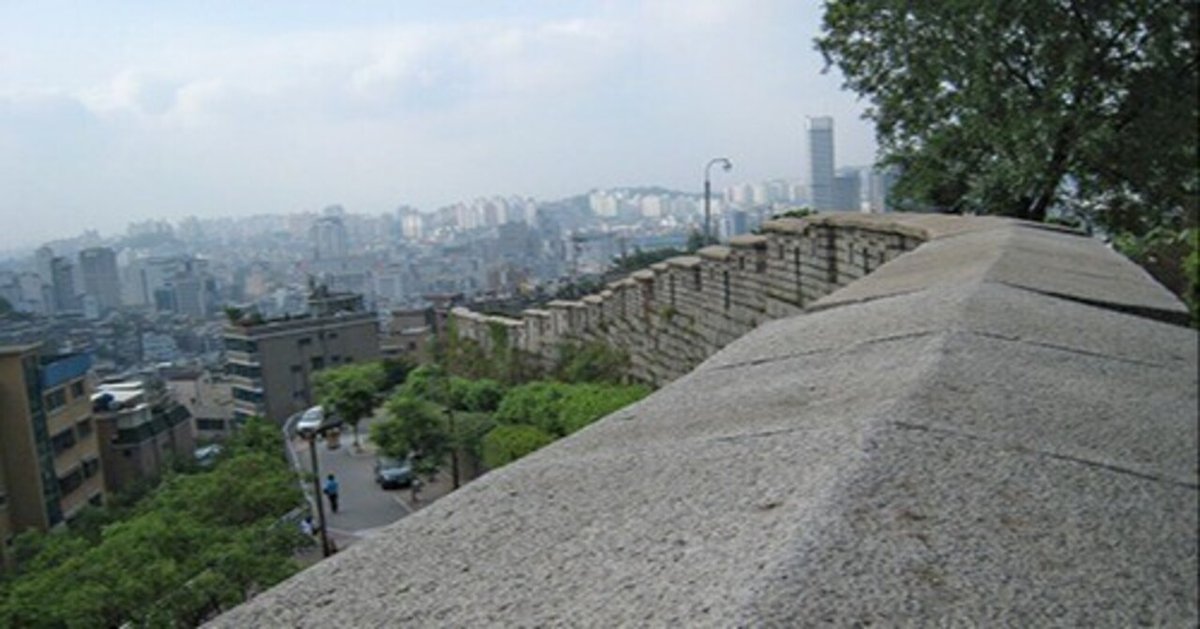
2007.05.30 ソウル(ソウル城郭、サンドル社)
2007年5月30日 ソウル城郭、サンドル社
6時起床、シャワー。
7時、周辺散策。
ソウルの観光案内地図を見るとホテルの前に建つ東大門(興仁之門)の奥から北にソウル城郭が延びている。万里の長城のようになっているのだろうか見に行くことにした。
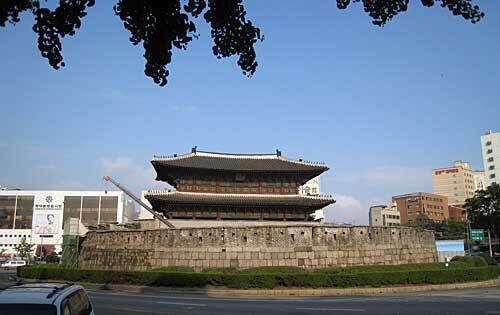
道路は既に交通ラッシュで交通整理をする警察官の笛がひっきりなしに鳴っている。
地下鉄1号線東大門駅の上を横切るように横断歩道を渡り、地図で見当をつけた細い坂道に入る。少し上ると車と交通整理の笛の音が届かなくなり周囲の緑が都会の真ん中にいることを忘れさせる。

歩き始めるとジンワリ汗ばんでくる。ときどき散歩をしている地元の人とすれ違う。しばらく歩くと石垣の上に城壁が見えてくる。
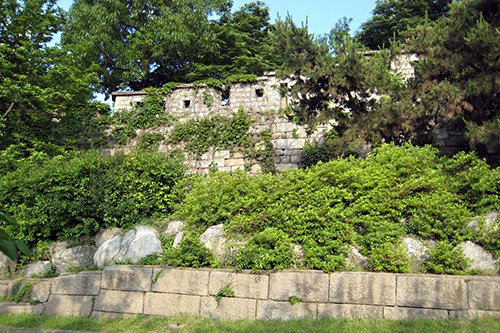
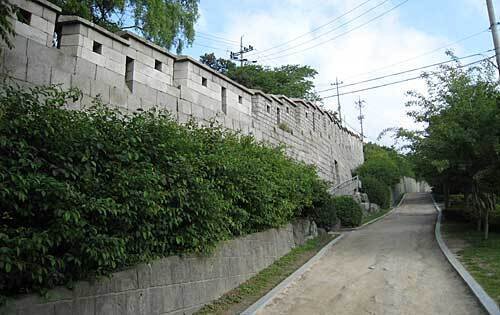
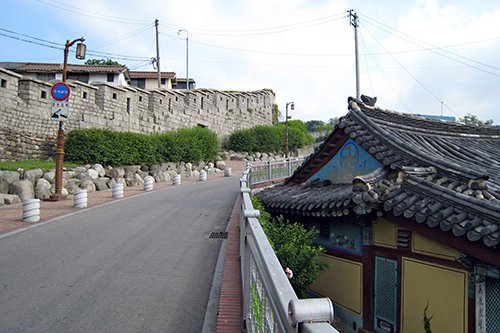
坂道を上り切った丘の上に、この辺りのことを説明している碑があった。所々誤植があるようだが原文のまま紹介する。
Naksan (Mt.)
Naksan was also called Naktasan, or Camel Mountain, as it's peak is shaped like the humped back of a camel, Naksan is located in the eastern part of Seoul, stretching to Jongno-gu, Dongdaemun-gu and Seongbuk-gu compared with Inwangsan to the west. One of the four inner mountains in Seoul -- along with Namsan, Inwangsan and Bukaksan -- Naksan oduples the seat of the Blue Dragon in traditional theory of geomancy. Based on the theory of geomancy in topography, Yi song-Gye or King Taejo, the founder of the Joseon Dynasty, chose Naksan as a symbolic representation of the blue dragon for protection and prosperity of the area, when selecting this city as it's capital. But it's mountain range was not long enough and it's spiritual energy was not solidly endowed compared with Inwangsan. Thus it is said that the title of Dongdeamun (the Great East Gate), Heunginmun, was renamed to include one more character into Heunginmun, in bid to address the lacking energy. In planning towns and communities, our ancestors took into consideration even geographical fratures of surrounding mountains and wisely employed intangible measured to complement any ahortcomings, Naksan is mostly composed of granite, and there used to be dense forests, clean suseok (natural stones for appreciation) along the streams, as well as mineral stings. Inpyeong Royal Prince, younger brother of King Hyojong of the Joseon Dynasty, had the Seokyang (sun set) Pavilion here as his residence. Also, there used to be Ihwa (pear flower) Pavilion and Ilwong (an old man) Pavilion established by a literary man named Lee Shim-won during King Youngjo's reign. Both pavilions were frequented by royal family members, literary man and artists. After King Danjong of t Joseon dynasty was exiled to a remove site at Yeongweol in Gangwon-do, having been dethroned by his uncle, Suyang, his consort, Queen Jungsoon, used to climb up this mountain everyday and spent the rest of her whole life just looking towards the east in the direction of Yeongweol where her husband was in exile. The Ssanggye-dong (double streams) valley at Naksan was onge known as one of the top five scene (scen) spots in Seoul, along with Samcheong, Inwang, Baekun and Cheonghak, because of it's extraordinarily shaped rocks and cliffs, dense forests and superb view of streams. Before Japanese colonization, Seoul residents lobed to stroll in Naksan, well known for it 7s clear streams and dense forests. There used to be residential village of the Yl family in Dongchon and also the residence of Ryu Gwan, otherwise know in his penname of Hajeong, a scholar of early Joseon era renowned for his loyalty and scholarly wisdom. His grandson, Yi Su-gwang with penname Jlbong, wrote his work, Jibongyuseol, at the Biudang which had been named in honor of his grandfather. It is one of numerous historical sites at Naksan.
城郭の所々に設置されているソウル城郭の説明板にはハングルと英語に続いて日本語があったので、これもそのまま紹介する。
ソウル城郭
指定番号:史跡第10号
時代:朝鮮太祖5年(1396)
所在地:ソウル特別市鐘路区恵化洞一帯
この城郭は、朝鮮第1代王、太祖が、戦争への備えとして、また盗賊を防ぐために作った城郭である。太祖5年 (1396) に20万人を動員して築き、第4代王、世宗4年 (1422) に城郭を全て石で再建すると同時に、弓や鉄砲が使える施設を造った。その後何度かにわたる補修工事が行われた。
この城郭は楕円形に近い。この城郭は、日本の侵略開始とともに、都市計画の名目のもと、一部が崩され、朝鮮戦争の時にさらに破壊されたが、ソウル市は1975年から総合的な城郭復元事業を始めた。
ナクサンを下りながら城郭の内側っだった西側を歩く。城の外を覗くと直ぐ下に石垣に沿ってに歩いてきた道が見下ろせる。
日本語の説明版にある弓や鉄砲用の四角い穴が模様のように開いている。
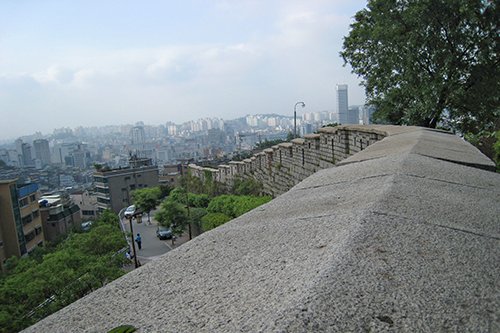
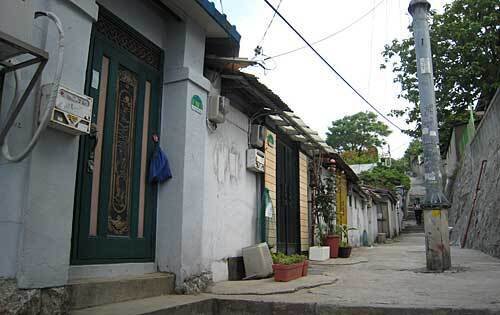
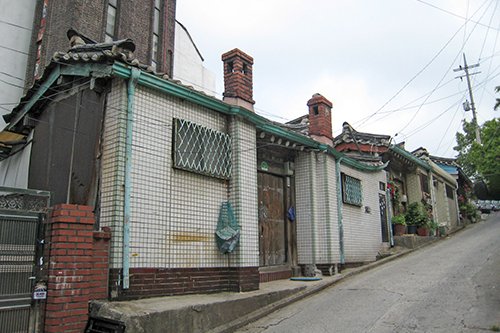
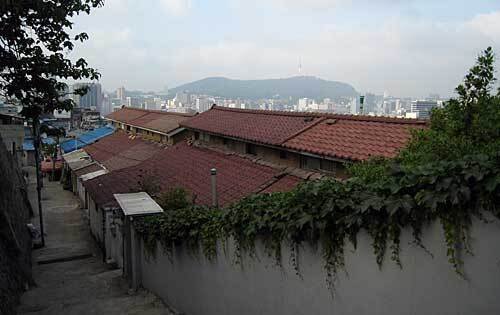
丘の斜面に並ぶ古い家々の間を細い露地が縫う。どの露地に入っていっても出て行く先の検討がつかないので諦めて元の場所に戻ること数回。
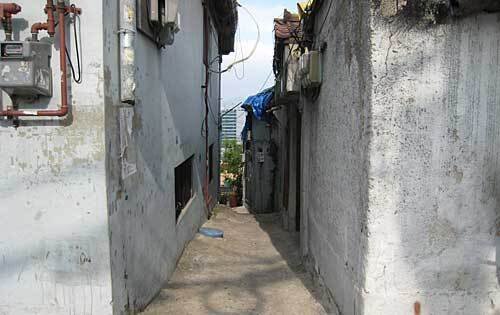
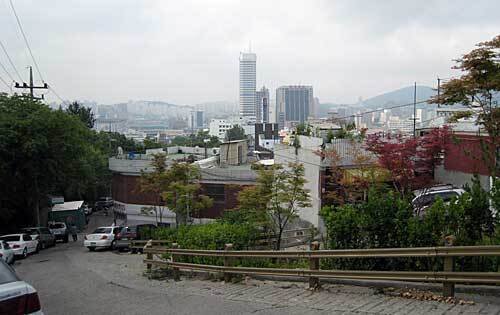
ソウル市内を歩いているとよく教会に出会うが、この丘の途中にあるのは中央聖潔教会。斜面を削って整地して建てられている。
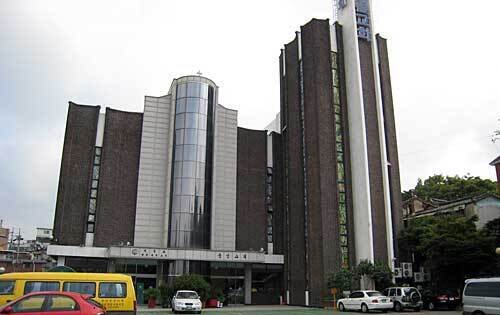
教会の横をさらに下りてゆくと下を地下鉄4四線が走る栗谷路に出た。
栗谷路の緩い坂道を左に行くと東大門、交差点を挟んで投宿している Best Western Hotel の反対側に出たようだ。
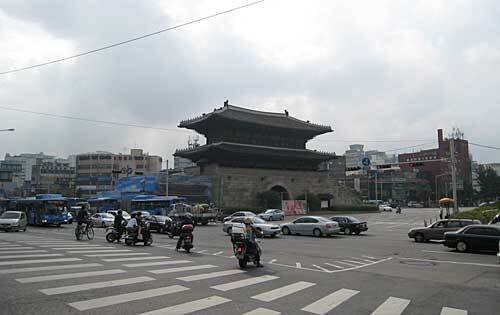
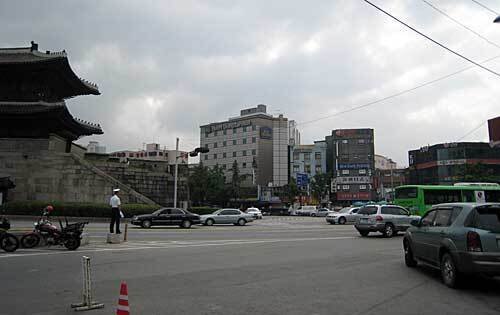
ここまで戻ってきて9時過ぎ、さすがに腹が減った。
ホテルの裏通り、チョンロ46ギルで、昨夜夕食時に利用した食堂「パースンチ」の斜め前に清潔そうな小さな店があったので入ってみた。店の名前は「トンヘラン食堂」。
「パースンチ」の女将さんより少し若目の女将さんが一人で切り盛りしていた。
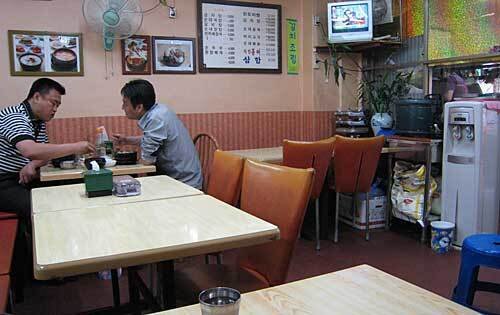
壁に貼ってある写真を指さしながら『ジャガイモ、おいしいよ』と勧めるのでお願いする。料理の名前は「カムジャタン」。
豚肉の背骨の辺りのことを言うらしい。昨夜のものとは少し味が違うようだ。ノンビリしていたら10時近くになってしまった。
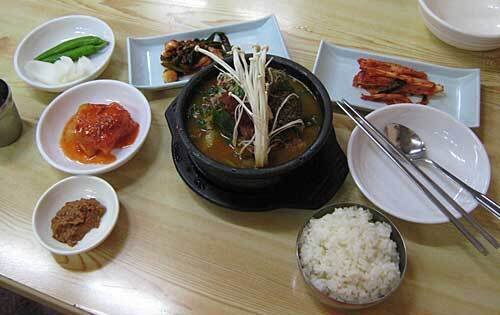
ホテルに戻りシャワーを浴び、地下鉄でサンドル社に向かう。
ホテル前の地下道で地下鉄4号線の東大門駅に向かい、そこから一駅乗れば恵化駅。
ホームも地下鉄の車内もラッシュアワーを過ぎたからか空いている。
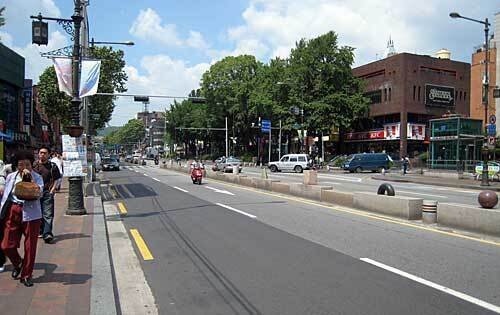
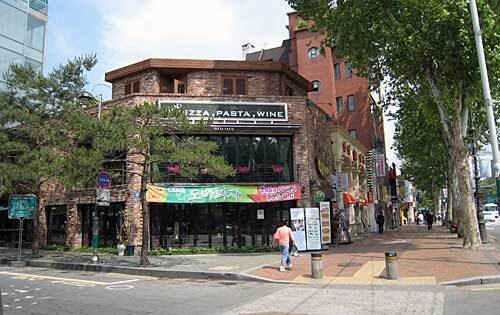
サンドル社に着いたときは20分遅刻。
会議室には既にKimさん、Koさん、Cheさん、Lee Hoさんが待っていた。
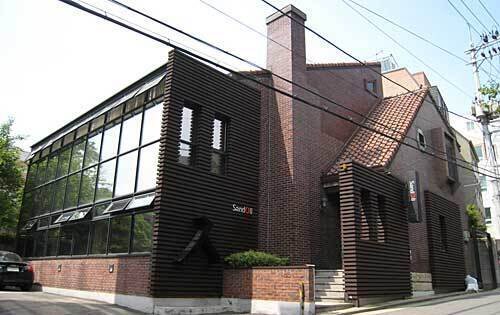
12時半まで会議。
昼食に出ようとして玄関でセオク社長に会い挨拶。会議出席者全員で大学路を渡り、マロニエ公園北側に広がるレストラン街で韓国の家庭料理「辛氏火爐」に行く。
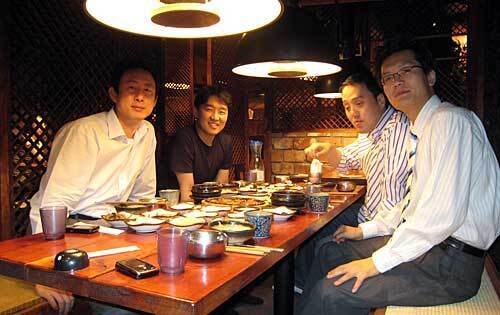
午後も2時過ぎから5時まで会議。
会議終了後はフォント・デザインチームと歓談。皆研究熱心な若いデザイナー達だ。明日の予定を Bruce さん、Lee Ho さんと打合せる。
その後、サンドル社を辞し、地下鉄でホテルに戻る。
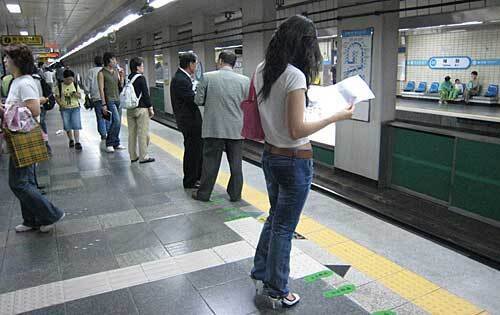
午後7時にホテルのロビーで Bruce さん、Lee Ho さん、他サンドルのフォントチームと落ち合い外出。
ホテルから歩いて清渓川を渡りオガンスギョ交差点角の背の高いファッションビル "Doota Tower"(トウサンタワー)に入る。
ビルから出て来る人、入って行く人は皆若い人たちばかり、それも女性の姿が圧倒的に多い。一人で店内を歩くのが気後れするくらいだ。
10階の “LAVE ROCK BEER PUB” で乾杯。
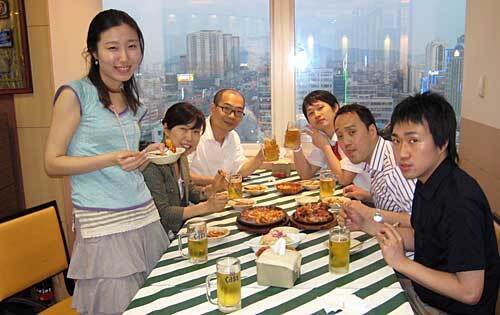
それぞれの仕事の話、家族の話、将来の希望と広がる話題は尽きず。9時半を過ぎて皆お腹も一杯になり、話疲れてきたところで解散。若い皆さんにご馳走になってしまった。
Doota Tower の前で皆と別れ一人ホテルに戻る。
ホテル1階ロビーの PC が空いていたので私用メールをチェック。返事が必要なメールが何本かあったが、この PC は日本語 IME が設定されていない。インストールしたくてもメニューがハングルで手も足も出ない。ローマ字で返事を書いたが何十年ぶりのローマ字だろう。帰国したら、あの返事は何なんだって言われるナ。
【訪問先一覧地図】
